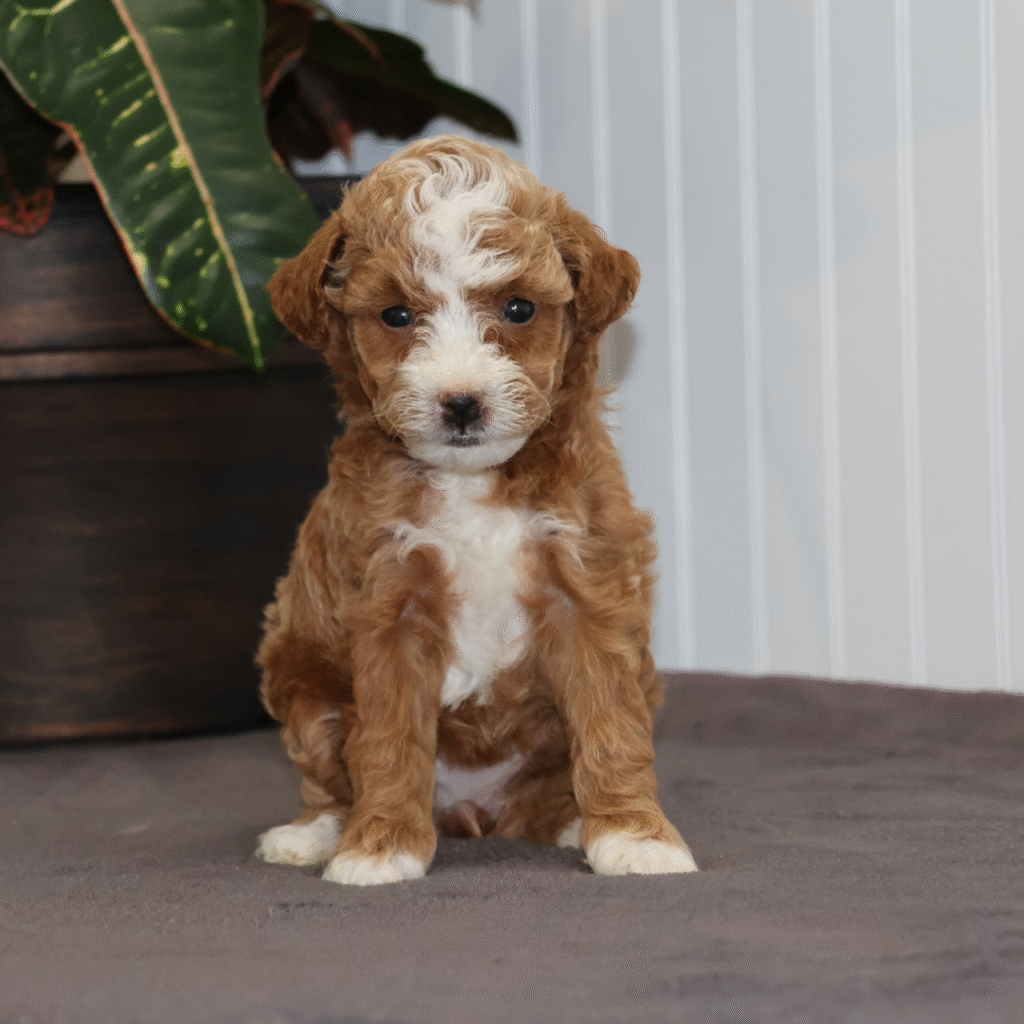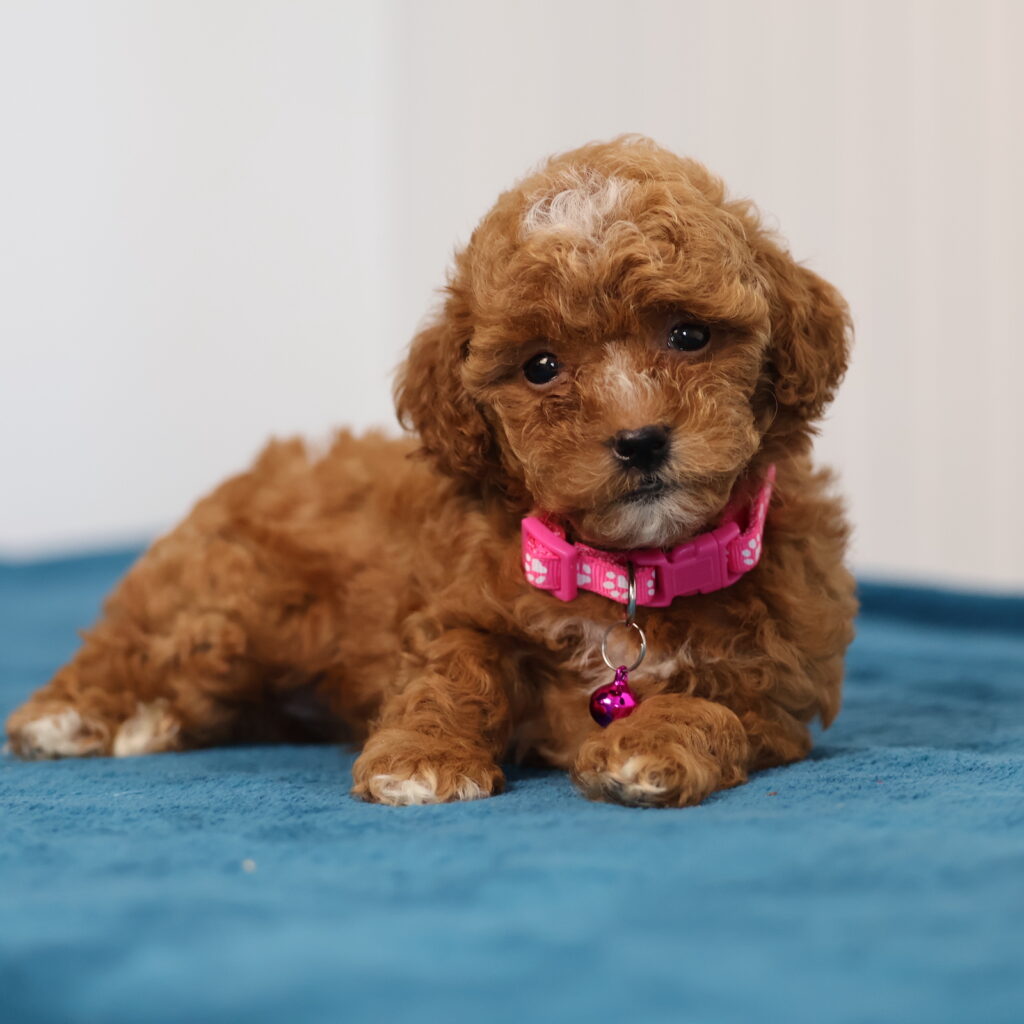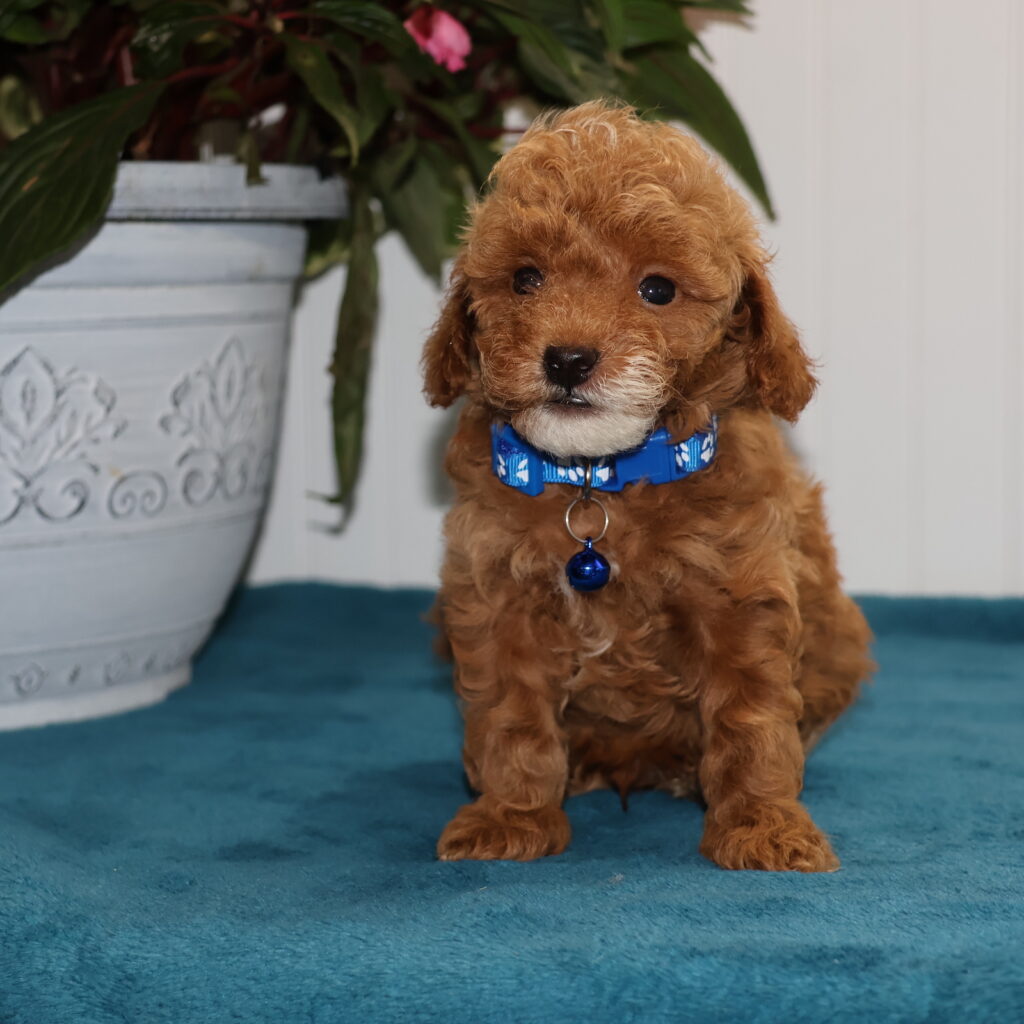When it comes to choosing a new furry companion, one of the first questions many prospective dog owners ask is whether a breed is hypoallergenic. For families with allergies or sensitivities, this isn’t just a matter of convenience—it can determine whether a beloved pet truly feels at home. Toy Poodles, known for their intelligence, charm, and curly coats, often come up in conversations about hypoallergenic breeds. But what does “hypoallergenic” really mean, and why does it matter so much when selecting a dog? Understanding the role of allergies, shedding, and coat type is essential before bringing a Toy Poodle into your life, ensuring a happy and healthy match for both you and your future pup.
Toy Poodles are charming, intelligent, and full of personality. They are a popular choice for many dog lovers. But are Toy Poodles hypoallergenic?
This question is common among potential pet owners with allergies. Understanding what “hypoallergenic” means is crucial. It doesn’t mean allergen-free, but rather less likely to cause allergies.
Toy Poodles are often labeled as hypoallergenic. This is due to their unique coat. Their curly fur traps dander, reducing its spread in the home.
Dander is a common allergen for many people. It is tiny flakes of skin shed by animals. Toy Poodles’ coats help keep dander contained.
Regular grooming is essential for Toy Poodles. It helps maintain their coat and minimize allergens. This makes them a better choice for allergy sufferers.
No dog breed is completely hypoallergenic. However, some breeds, like Toy Poodles, are more suitable for those with allergies. They are part of the Poodle family, known for being hypoallergenic.
In this article, we will explore the hypoallergenic traits of Toy Poodles. We will also provide tips for living with these delightful dogs.
When we describe a dog as hypoallergenic, it means the breed is less likely to trigger allergic reactions. This does not imply that the dog is free from allergens. Instead, hypoallergenic breeds usually produce fewer allergens compared to other breeds.
Allergic reactions in humans are most often caused by proteins found in a dog’s dander, saliva, and urine. Dander, which are tiny skin particles, tends to linger in the air and settle on surfaces. Hence, low-shedding dogs, such as Toy Poodles, are often considered hypoallergenic because they spread less dander.
Understanding the term hypoallergenic involves distinguishing it from being allergen-free. No breed is 100% allergen-free, but some breeds are more manageable for allergy sufferers. Hypoallergenic dogs are generally a better option for individuals with mild to moderate allergies.
Common characteristics of hypoallergenic dog breeds include:
Choosing a hypoallergenic breed requires considering your own allergy sensitivity. Some people may still have reactions even to hypoallergenic dogs. Thus, it’s always advisable to spend time with a breed before making a decision. Being informed helps ensure that both you and your future pet enjoy a comfortable living environment together.
Toy Poodles are renowned for their hypoallergenic characteristics. Their unique coat plays a significant role in this reputation. The breed has a curly coat that reduces shedding and minimizes dander spread. These features contribute to them being more tolerable for allergy sufferers.
Scientific research has demonstrated how Toy Poodles produce fewer allergens. Proteins present in dog saliva and skin flakes trigger most pet allergies. The tightly curled coat of Toy Poodles traps these particles, preventing them from freely circulating in the air. This characteristic is a significant factor in their hypoallergenic nature.
It’s important to note that hypoallergenic does not mean allergy-proof. Allergens are still present in Toy Poodles, but in smaller quantities. Allergy effects can vary widely among individuals, depending on their sensitivity. Therefore, Toy Poodles may still cause mild reactions in some allergy-prone people.
Here are some scientific insights into why Toy Poodles are considered hypoallergenic:
Despite their hypoallergenic properties, some preventive measures can further reduce allergy risks. Regular grooming and cleaning of living spaces are essential. These practices significantly cut down potential allergens and ensure a better quality of life for both you and your pet.
Toy Poodles, with their charming intelligence and sociable nature, make lovely companions. Their hypoallergenic traits are an added benefit for those dealing with pet-related allergies. Understanding their specific attributes can help prospective owners make informed decisions and enjoy a harmonious life with their furry friends.



Toy Poodles are often highlighted for their hypoallergenic qualities. One primary reason is their low-shedding coat. Unlike many dogs, Toy Poodles have a coat that produces little loose hair. This results in fewer allergens being released into the environment, making them suitable for people sensitive to dog allergens.
Their curly fur helps contain the dander, reducing its dispersion. This characteristic also means less cleaning for those worried about allergen buildup in their living space. The fur’s unique structure acts like a natural filter, trapping dander and allergens close to the skin rather than releasing them.
There are several reasons Toy Poodles are considered hypoallergenic:
Additionally, the Poodle family, including Toy Poodles, is famed for their reduced allergen production. As they groom themselves, the saliva proteins that can trigger allergies are less likely to end up on their coat. This further limits the spread of allergens around the home.
Despite these beneficial traits, it’s essential to understand that no breed is completely devoid of allergens. Toy Poodles stand out as one of the more allergy-friendly breeds, making them an attractive option for allergy sufferers. By maintaining a regular grooming routine, owners can further minimize the risk of allergic reactions in the household.
The Toy Poodle’s coat is distinctive and functions differently from many other breeds. Its curly nature contributes to its reputation for being hypoallergenic. These tight curls serve to trap shed hair rather than allowing it to disperse throughout the home, leading to a cleaner living environment.
The structure of their coat is dense and wool-like, which helps in minimizing shedding. As the hair doesn’t fall off easily, it reduces the number of allergens released into the air. This is a key reason why some people with mild allergies find Toy Poodles to be a suitable pet choice.
To further break down the Toy Poodle coat:
In terms of shedding, Toy Poodles lose less hair compared to many other breeds. This low-shedding attribute makes them appealing to those seeking non-shedding dogs. Less hair around the house implies fewer allergens, which is beneficial for maintaining an allergy-friendly atmosphere.
Dander, which consists of tiny skin flakes, can cause allergic reactions. However, the Toy Poodle’s coat helps keep dander under control. The trapped dander can be managed effectively through regular grooming and baths, ensuring it doesn’t accumulate excessively. Hence, with proper coat care, Toy Poodles can be excellent companions even for those with mild allergies.
Consistent grooming is crucial for maintaining a Toy Poodle’s hypoallergenic qualities. Regular maintenance helps keep dander and shedding under control. A grooming routine is essential not only for the dog’s health but also for the comfort of allergy sufferers.
One of the most effective ways to reduce allergens is through regular bathing. Washing your Toy Poodle every three to four weeks can minimize the amount of dander present on their coat. Use hypoallergenic or dog-specific shampoos to avoid skin irritation.
Brushing is another vital component. Frequent brushing helps to remove loose hair and dander before they spread around the home. Aim to brush your Toy Poodle two to three times a week. This practice also prevents tangles and mats in their curly coat.
Here are some tips for effective grooming:
Trimming is an often-overlooked aspect of grooming. Ensure their hair doesn’t grow too long and reach their eyes or other sensitive areas. Regular visits to a professional groomer can ensure your Toy Poodle’s coat remains manageable and less likely to aggravate allergies.
In summary, a committed grooming routine can significantly reduce allergens. This benefits both the Toy Poodle and its human companions by promoting a healthy, allergy-friendly environment.
Toy Poodles are often highlighted for their hypoallergenic attributes, but how do they stack up against other breeds? Like the Maltese, Bichon Frise, and Portuguese Water Dog, Toy Poodles are popular among allergy sufferers. These breeds are well-regarded for their low shedding and reduced dander levels.
Each hypoallergenic breed has unique characteristics that appeal to different people. For instance, Maltese dogs are known for their silky, long coats, while Portuguese Water Dogs possess a thick and curly coat similar to the Toy Poodle. Bichon Frise offers a slightly different fur texture, resembling a plush toy.
Here are a few notable hypoallergenic breeds, including Toy Poodles:
While Toy Poodles stand out for their intelligence and trainability, others may offer different advantages. Toy Poodles, however, remain a solid choice for those seeking a small, hypoallergenic companion with plenty of personality. The decision ultimately rests on the specific needs and preferences of the owner.


Living with a Toy Poodle can be a delightful experience for allergy sufferers. Many owners report fewer allergy symptoms due to the breed’s low-shedding coat. The curly fur traps dander and allergens, minimizing their spread throughout the home.
Personal experiences reveal that regular grooming routines greatly aid in reducing allergens. Frequent brushing and bathing control dander levels and help the dog remain clean. This routine not only contributes to a cleaner home but also strengthens the bond between the owner and the poodle.
Here are some tips that allergy sufferers commonly find helpful when living with Toy Poodles:
Ultimately, many allergy sufferers find the joy of owning a Toy Poodle outweighs the minor allergen exposure they might face. The dog’s affectionate nature and intelligence make it a cherished addition to any family, offering both companionship and relief from allergies.
Choosing the right Toy Poodle means asking the right questions. Reputable Toy Poodle Breeders can provide valuable insights into the breed’s unique characteristics. Gaining this knowledge can aid in making an informed decision.
When meeting with breeders, inquire about the parent’s health history. This information is crucial for understanding potential genetic health issues your Toy Poodle might face. Knowledge about the lineage helps in choosing a healthy puppy.
Consider asking these questions to ensure you’re getting a quality pup:
Getting to know the breeder and their practices helps ensure you receive a healthy and well-adjusted puppy. Proper breeder communication aids in the transition of the puppy to your home, ensuring a smoother adjustment period. This careful process ultimately leads to a happy and healthy Toy Poodle that fits perfectly into your life.
Bringing Toy Poodle Puppies into your home is an exciting journey. To maintain an allergy-friendly environment, early care practices are vital. Proper care ensures your puppy grows healthy and minimizes allergens.
Start by focusing on grooming habits. Regular brushing can help control shedding and reduce dander. This simple routine is essential for keeping allergens at bay and maintaining the coat’s health.
Here are some key care tips for allergy-friendly homes:
Monitor your puppy’s diet as well. A balanced diet supports a healthy coat, which reduces shedding and dander. Paying attention to these details makes it easier to enjoy life with your Toy Poodle while keeping allergies manageable. Early and consistent care creates a harmonious home for both you and your new companion.
Toy Poodles are often labeled hypoallergenic because they shed less than many breeds. However, no dog is entirely free of allergens.
Their curly coats trap dander, reducing airborne allergens. This trait is beneficial for those with allergies.
Here’s a quick list addressing common concerns:
Yes, everyone’s sensitivity varies. Spending time with the breed before adoption is wise.
Regular grooming, cleaning, and using air purifiers can help. These steps minimize exposure to potential allergens. Planning and maintenance make living with Toy Poodles comfortable for both you and the furry companion.
Deciding if a Toy Poodle suits your lifestyle requires thought. Their hypoallergenic traits are appealing, but not all allergies react the same. These playful, small dogs adapt well to different homes, making them versatile companions.
If you’re prepared for regular grooming and love an active, intelligent pet, a Toy Poodle could be a perfect match. Spend time with one to gauge your comfort level. Your personal experience will guide your decision. Now you have all the information to answer is a toy poodle hypoallergenic.